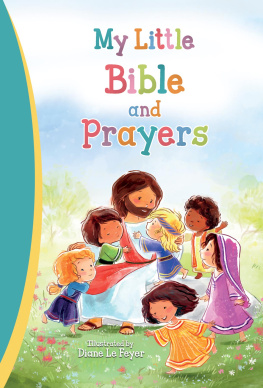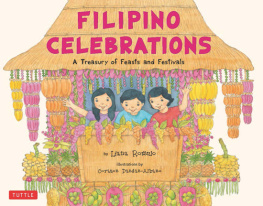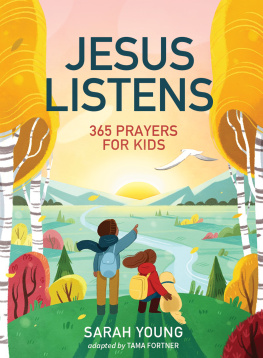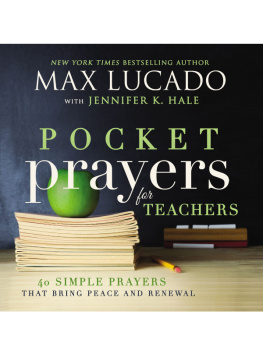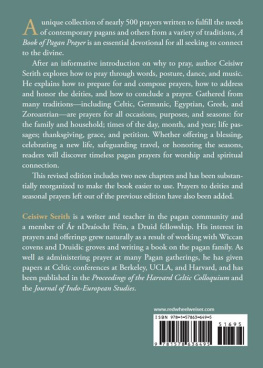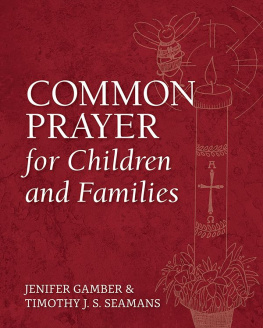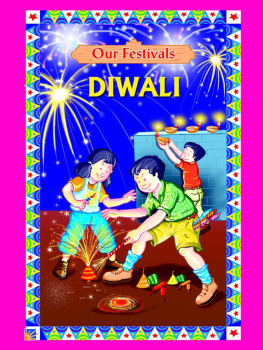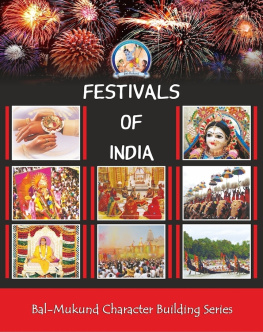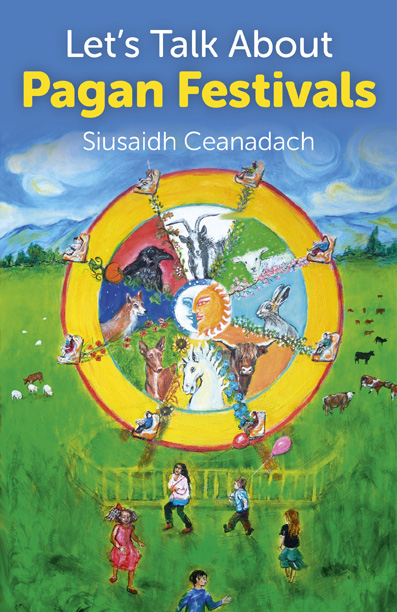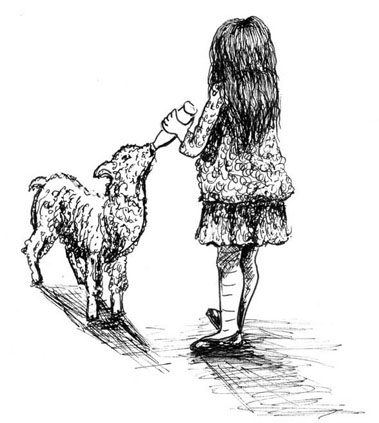LETS TALK ABOUT PAGAN FESTIVALS
SIUSAIDH CEANADACH
FIRST PUBLISHED BY MOON BOOKS, 2012
Moon Books is an imprint of John Hunt Publishing Ltd., Laurel House, Station Approach,
Alresford, Hants, SO24 9JH, UK
office1@jhpbooks.net
www.johnhuntpublishing.com
www.moon-books.net
For distributor details and how to order please visit the Ordering section on our website.
Text copyright: Siusaidh Ceanadach 2012
ISBN: 978 1 78099 463 5
All rights reserved. Except for brief quotations in critical articles or reviews, no part of this book may be reproduced in any manner without prior written permission from the publishers.
The rights of Siusaidh Ceanadach as author have been asserted in accordance with the Copyright, Designs and Patents Act 1988.
A CIP catalogue record for this book is available from the British Library.
Design: Stuart Davies
Printed and bound by CPI Group (UK) Ltd, Croydon, CR0 4YY
We operate a distinctive and ethical publishing philosophy in all areas of our business, from our global network of authors to production and worldwide distribution.
CONTENTS
ACKNOWLEDGEMENTS
I would like to thank the Acredyke Nursery School, Robroyston, Glasgow, for asking me to write a little booklet about Imbolc that led to a request for more festivals and in turn resulted in this book.
I would also like to acknowledge the help and support that our clan cousin Maria
Moloney has given me, her continued friendship, knowledge and patience seems to be unending. The quiet stable support of Trevor Greenfield is also greatly appreciated.I
must also mention my own grandchildren, all seven of them for without their presence in my life I would never have been prompted to write for children.
I should also like to thank *Nina Falaise, the gifted visionary artist who has produced the cover for this book and all the drawings.
*Nina Falaise was born in Skipton, Yorkshire. Nina has been an active participant in the Western Mystery Tradition for many years, contributing her experience of dance, mask making and choreography to ceremonial rituals. Nina is a visionary artist, whos art is inspired through ritual, meditation and her ongoing studies of the Great Work. Nina has illustrated for several books, including, A Ceremony for Every Occasion by Siusaidh Ceanadach, Daughters of Danu by Piet Ceanadach and What Brave Bulls Do by Rohase Piercy. For artwork commissions by Nina, contact:
INTRODUCTION
There are eight major festivals, and each is roughly six weeks apart. These follow the years turning and are tuned into nature and the seasons. Some of the festivals are well known, Beltane and Samhain (Halloween) are two of them and they are at opposite times of the year. In fact there are four solar festivals, two solstices and two equinoxes, these mark the path of the Sun (its actually the Earth that moves and not the Sun, for this is an illusion and its easier to think of the Sun growing and getting warmer and then colder).
There are also four cross festivals these were fire celebrations and folk would build a big bonfire, light candles and have a celebration. The four cross festivals are: Imbolc (February 2nd), Beltane (May 1st), Lughnasadh (August 1st) and Samhain (October 31st).
Put together they divide the year into eight festivals referred to as The Wheel of the Year. Each of them is connected to nature and its changing seasons, to whats going in the farmers year and to special things to remember through the year.
Imbolc is the first Pagan festival of the Wheel of the Year after Midwinter. The Pagan Celtic Year ends at Samhain, but for the purpose of this book and for little children I think it may be easier for them to link early spring to new starts and so I am starting with Imbolc.
IMBOLC FIRST MILK
TEACHERS, PARENTS AND GUARDIANS NOTES
Imbolc was dedicated to Brigit to welcome in the start of the spring.
At Midwinter, we celebrated the birth of the Divine Child, the light of inspiration and hope. We teach that the Mother Goddess labours all through the longest night to give birth to the new child, the tiny Sun. This is a myth, a story we tell our children and young ones to help them understand. Naturally, you and I know that it is the orbit of the Earth around our star, the Sun, which causes the change in the seasons, and we know the Sun will get stronger after Midwinter. But its not just the basic facts we are talking about here, in order to encourage a faith, we need to put our thoughts into story form for the sake of our young ones. Then it is a good idea to teach in story form. Its difficult for little ones to understand the ever-changing seasons, the farmers year, the birth, growth and then death of our animals.
We are told by our own elders that Brigit was very fond of animals. Saint Bridget as she became to the Christian Church was said to have a healing mission especially for animals and it is said that she helped cure many a sick animal.
February 2nd is the day in which we celebrate the Goddess Brigit. We connect to her in three ways and indeed some stories tell of her having two sisters of the same age. She is a Goddess of the Hearth, Goddess of Smithcraft and Poetry, and she is also the healing Goddess of Birth, and Lactation. Christian myths tell of her being the midwife of the Baby Jesus and she certainly does link with midwives.
In early times, the hearth was a very important part of family life, not only did it provide a place where food was cooked, it was the heat source of the home and it was around the hearth that the family and friends would sit in the evening and sing songs, play music and tell stories.
A blacksmith was also a very important man in a village for without him the horses would not have suitable shoes to enable them to do the heavy work needed on a farm, and the blacksmith would also make and mend farm tools as well as knives, swords and spears all the things needed to kill and butcher meat for the family.
In Ireland and amongst other Celtic tribes, Brigit is Mary of the Gaels, the main Goddess called upon and called to for many different reasons throughout the year. Myth tells us that the first Brigit was the daughter of the Dagda, the good God and one of the Tuatha D Danann, the children of Danu, that she was the half-sister of Cermait, Aengus, Midir and Bodb Derg. She is a classic triple Goddess.
Brigit gathered herself a group of young women whom she taught the skills required for healing, astronomy, herbcraft and healing. These priestesses became important people within their villages and tribes; they were the midwives, the healers and they taught others how to work with the changing seasons. At some stage back beyond recorded time, following a great war, Brigit and other Dananns chose to take to the land beneath the ground. She travelled on, leaving a high or chief priestess in charge of the group of women who kept a flame burning night and day all year round bar one and continued to teach all the skills needed in their roles in early tribal life.
I am sure you know the story that eventually Christianity came to these lands and Pagan ways were swallowed up into a new faith, but Brigit was so very important to the Gaels that the Church made her a Saint.



